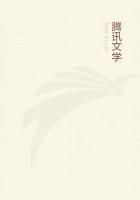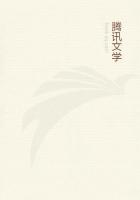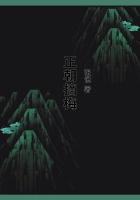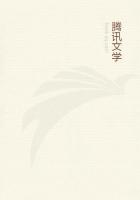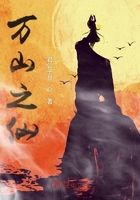Distribution - Nova Scotia to Florida, westward to Nebraska.
Snugly protected in a papery sheath enfolding a silvery-green leaf-cloak, the solitary erect bud slowly rises from its embrace, sheds its sepals, expands into an immaculate golden-centered blossom that, poppy-like, offers but a glimpse of its fleeting loveliness ere it drops its snow-white petals and is gone.But were the flowers less ephemeral, were we always certain of hitting upon the very time its colonies are starring the woodland, would it have so great a charm? Here to-day, if there comes a sudden burst of warm sunshine; gone tomorrow, if the spring winds, rushing through the nearly leafless woods, are too rude to the fragile petals - no blossom has a more evanescent beauty, none is more lovely.After its charms have been displayed, up rises the circular leaf-cloak on its smooth reddish petiole, unrolls, and at length overtops the narrow, oblong seed-vessel.Wound the plant in any part, and there flows an orange-red juice, which old-fashioned mothers used to drop on lumps of sugar and administer when their children had coughs and colds.As this fluid stains whatever it touches - hence its value to the Indians as a war-paint - one should be careful in picking the flower.It has no value for cutting, of course; but in some rich, shady corner of the garden, a clump of the plants will thrive and bring a suggestive picture of the spring woods to our very doors.It will be noticed that plants having thick rootstocks, corms, and bulbs, which store up food during the winter, like the irises, Solomon's seals, bloodroot, adder's tongue, and crocuses, are prepared to rush into blossom far earlier in spring than fibrous-rooted species that must accumulate nourishment after the season has opened.
A newly opened flower which is in the female stage has its anthers tightly closed, and pollen must therefore be carried from distinct plants by the short-tongued bees and flies out collecting it.No nectar rewards their search, although they alight on young blossoms in the expectation of finding some food, and so cross-fertilize them.Late in the afternoon the petals, which have been in a showy horizontal position during the day, rise to the perpendicular before closing to protect the flower's precious contents for the morrow's visitors.In the blossom's staminate stage, abundant pollen is collected by the hive bees chiefly; but, those of the Halictus tribe, the mining bees and the Syrphidae flies also pay profitable visits.Inasmuch as the hive bee is a naturalized foreigner, not a native, the bloodroot probably depended upon the other little bees to fertilize it before her arrival.For ages this bee's small relatives and the flowers they depended upon developed side by side, adapting themselves to each other's wants.Now along comes an immigrant and profits by their centuries of effort.
DUTCHMAN'S BREECHES; WHITE HEARTS; SOLDIER'S CAP; EAR-DROPS(Bicuculla Cucullaria; Dicentra cucullaria of Gray) Poppy family Flowers - White, tipped with yellow, nodding in a 1-sided raceme.
Two scale-like sepals; corolla of 4 petals, in 2 pairs, somewhat cohering into a heart-shaped, flattened, irregular flower, the outer pair of petals extended into 2 widely spread spurs, the small inner petals united above; 6 stamens in 2 sets; style slender, with a 2-lobed stigma.Scape: 5 to 10 in.high, smooth, from a bulbous root.Leaves: Finely cut, thrice compound, pale beneath, on slender petioles, all from base Preferred Habitat - Rich, rocky woods.
Flowering Season- - April-May.
Distribution - Nova Scotia to the Carolinas, west to Nebraska.
Rich leaf mould, accumulated between crevices of rock, makes the ideal home of this delicate, yet striking, flower, coarse-named, but refined in all its parts.Consistent with the dainty, heart-shaped blossoms that hang trembling along the slender stem like pendants from a lady's ear, are the finely dissected, lace-like leaves, the whole plant repudiating by its femininity its most popular name.It was Thoreau who observed that only those plants which require but little light, and can stand the drip of trees, prefer to dwell in the woods - plants which have commonly more beauty in their leaves than in their pale and almost colorless blossoms.Certainly few woodland dwellers have more delicately beautiful foliage than the fumitory tribe.
Owing to this flower's early season of bloom and to the depth of its spurs, in which nectar is secreted by two long processes of the middle stamens, only the long-tongued female bumblebees then flying are implied by its curious formation.Two canals leading to the sweets invite the visitor to thrust in her tongue, and as she hangs from the white heart and presses forward to drain the luscious drops, first on one side, then on the other, her hairy underside necessarily comes in contact with the pollen of younger flowers and - with the later maturing stigmas of older ones, to which she carries it later.But, as might be expected, this intelligent bee occasionally nips holes through the spurs of the flower that makes dining so difficult for her - holes that lesser fry are not slow to investigate.
According to the Rev.Alexander S.Wilson, bumblebees make holes with jagged edges; wasps make clean-cut, circular openings; and the carpenter bees cut slits, through which they steal nectar from deep flowers.Who has tested this statement about the guilty little pilferers on our side of the Atlantic?
SQUIRREL CORN
(Bicuculla Canadensis) Poppy family Flowers - Irregular, greenish white tinged with rose, slightly fragrant, heart-shaped, with 2 short rounded spurs, over 1/2 in.


